Integrating Greenery into Home Environments
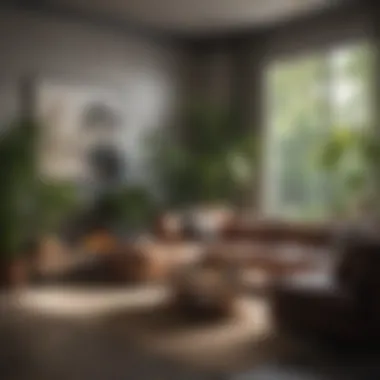

Intro
Integrating plants into home environments has become an essential aspect of modern living. Many homeowners now understand the physical and psychological benefits associated with housing greenery. From improving air quality to enhancing aesthetic appeal, plants play a key role in the well-being of occupants. This guide aims to provide a thorough exploration of how to incorporate these living elements effectively within your personal spaces.
Design Inspiration
Creating a space that feels both inviting and alive begins with the right design inspiration. This section focuses on trending styles and popular color palettes that can guide your choices in plant integration.
Trending Styles
The aesthetics of interior design have shifted significantly towards embracing nature. Among the trending styles, the following are notable:
- Biophilic Design: This movement emphasizes the connection between humans and nature, using plants not just as decoration, but as integral elements in architectural environments.
- Minimalism: Simple, uncluttered spaces with strategic plant placements can create a calming atmosphere. Choices often lean towards succulents or smaller plants that require less maintenance.
- Eclectic: Mixing various plant types and containers allows for personal expression. Enjoying diverse species, such as ferns and orchids, contributes to vibrancy.
Color Palettes
Color plays an important role in how greenery can be integrated. Some effective palettes include:
- Earth Tones: Utilizing browns, greens, and other natural hues can enhance the connection to the outdoors.
- Pastels: Soft colors combined with vibrant green plants create a refreshing ambiance, making spaces feel lighter and airier.
- Contrasts: Bold colors paired with deep greens can make plants stand out, creating focal points within a room.
Practical Tips
Applying practical methods can simplify the process of maintaining a green environment. Here, we discuss essential maintenance and budgeting techniques to maximize results.
Maintenance & Care
Caring for indoor plants involves understanding their specific needs. Different species require varying levels of water, light, and attention. Here are some general tips:
- Identify Plant Types: Always research the specific requirements of your chosen plants. Some thrive in low light, while others need bright, indirect sunlight.
- Watering Regimen: Establish a consistent watering schedule, but avoid overwatering. Many plants prefer to dry out slightly between waterings.
- Fertilizing: Use appropriate fertilizers in the growing season to promote healthy growth. Be cautious of over-fertilizing, which can harm your plants.
Budgeting & Planning
Integrating plants into your home can be done effectively without excessive spending. Here are some considerations:
- Set a Budget: Determine how much you are willing to spend on plants, pots, and accessories.
- Choose Wisely: Opt for low-maintenance plants to reduce long-term costs.
- DIY Planters: Consider creating your own plant pots using materials like old containers or wood, which can be a cost-efficient and unique solution.
"Incorporating greenery into your home not only beautifies the space but also fosters a sense of tranquility and connection to nature."
Understanding the Role of Greenery in Home Design
Integrating greenery into home design is not merely a trend; it represents a pivotal shift in how we perceive our living environments. The inclusion of indoor plants can significantly enhance not only the aesthetic appeal of a space but also contribute to the overall well-being of its inhabitants. As urban areas grow and natural landscapes diminish, the need for more greenery in our homes has become increasingly urgent. This section will delve into key aspects such as psychological effects, aesthetic value, and functional benefits that greenery brings to home design.
The Psychological Effects of Indoor Plants
Research indicates that indoor plants have the potential to improve mood and increase feelings of relaxation. The presence of greenery can help reduce stress levels. Studies show that individuals in environments enriched with plants experience lower levels of anxiety. Plants create a natural setting that eases the mind. Furthermore, engaging with plant care may provide a sense of accomplishment and purpose. For many, nurturing indoor plants offers a respite from the fast-paced nature of modern life. Access to nature enhances cognitive function and promotes creativity, which is particularly beneficial in multipurpose living spaces.
Aesthetic Value of Greenery in Living Spaces
Incorporating plants into home environments elevates visual appeal. The addition of greenery introduces color, texture, and dimension into otherwise neutral spaces. Varied shapes and sizes of plants can create visual interest and focal points. For instance, a tall fiddle leaf fig can serve as a striking focal piece in a living room, while smaller succulents can adorn a coffee table.
Additionally, the arrangement and choice of greenery can reflect personal style. Plants can be used to contrast or complement existing decor, enhancing the overall theme of the home. This harmonious integration of plants not only beautifies spaces but also fosters a and inviting atmosphere.
Functional Benefits of Plants
Plants serve practical functions beyond aesthetics and psychological effects. They improve indoor air quality by absorbing toxins and releasing oxygen. Notably, plants such as the peace lily and snake plant are recognized for their air-purifying capabilities. Their presence can lead to healthier home environments, which is particularly crucial for individuals with respiratory issues.
Moreover, indoor greenery helps regulate humidity levels. This particularly benefits areas prone to dryness, enhancing comfort in living spaces. The strategic placement of plants can also aid in noise reduction, making homes quieter and more serene. Overall, the functional advantages of greenery contribute to a more enjoyable living experience.
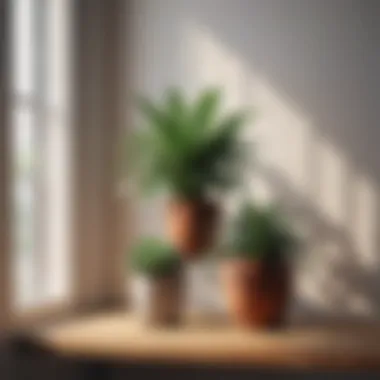
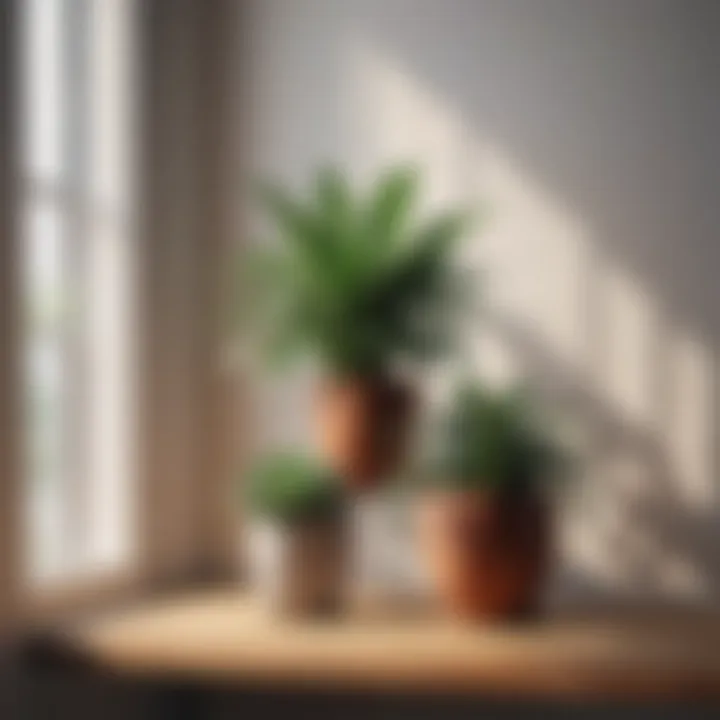
Integrating plants into home design is not just about beauty; it is about enhancing quality of life.
Choosing the Right Plants for Your Home
The choice of the right plants for your home is a crucial step in integrating greenery into your living spaces. Different species offer various benefits, fitting diverse conditions and preferences. Knowing which plants suit your environment ultimately defines the success of indoor gardening. This section elaborates on significant factors, such as light levels, care requirements, and other considerations. Choosing wisely not only enriches aesthetic appeal but also contributes to the overall health of your home.
Low-Light Plants for Dim Spaces
Not all homes are flooded with natural light. For dimly lit areas, low-light plants can thrive even with limited sunlight. Selecting these plants allows homeowners to still enjoy the benefits of greenery. Popular low-light options include the Snake Plant, Pothos, and ZZ Plant. These plants tend to be forgiving and require low maintenance. They purify the air and enhance wellbeing, making them suitable companions in shaded corners of your house.
Key benefits of low-light plants include:
- Air purification: Many of these plants effectively remove toxins from the air.
- Minimal care needs: They often require less frequent watering and can adapt to various conditions.
- Versatility: They can fit in various decor styles and locations, from a home office to a living room.
Air-Purifying Indoor Plants
Air quality indoors can often be compromised due to various pollutants. This is where air-purifying plants play an essential role. Integrating species like the Spider Plant, Peace Lily, or Bamboo Palm can significantly elevate air quality. These plants have been shown to remove harmful substances like formaldehyde and benzene from the air. By introducing such plants into your home, you create a healthier environment.
The advantages include:
- Improved air quality: Constantly filtering the air leads to better respiratory health.
- Stress reduction: A cleaner atmosphere promotes relaxation and reduces anxiety.
- Aesthetic appeal: Many air-purifying plants also possess striking appearances.
Flowering Plants to Enhance Aesthetics
Finally, flowering plants can elevate the visual appeal of any room. Their vibrancy and color bring life to space. Popular choices like the African Violet or the Phalaenopsis Orchid offer both beauty and joy. Flowering plants are particularly effective in areas where you want to create focal points, such as kitchens or dining areas. They serve as conversation starters and contribute positively to the ambiance.
Benefits of choosing flowering plants include:
- Vibrant colors: They bring a cheerful element to your decor.
- Mood enhancement: The presence of flowers can boost mood and increase feelings of happiness.
- Personalization: You can select plants that resonate with your style preferences.
Design Strategies for Incorporating Greenery
Incorporating greenery into home environments is not just about adding plants. It requires thought-out strategies that enhance both functionality and aesthetics of spaces. Design strategies play a vital role in ensuring that plants thrive and that they contribute positively to the overall ambiance of a room. Effective integration of greenery can bring forth a multitude of benefits, including improved mood, increased productivity, and an inviting atmosphere. These strategies can vary based on individual preferences and the unique challenges of each living space.
Creating Plant Zones in Your Home
Creating designated zones for different types of plants can dramatically transform your home. A plant zone is simply an area where specific plants are grouped to serve a particular function or create a certain mood. For instance, a cozy reading nook can be enhanced with small potted plants like succulents or ferns that complement the space. This approach also makes plant care easier, as you can adjust the watering and light conditions for each zone based on the needs of the plants.
Consider assigning a sunny spot in your living room for light-loving plants like pothos or spider plants. Alternatively, darker corners may benefit from shade-tolerant species such as snake plants. By organizing plants in zones, you can create visually appealing spaces that also cater to the varied environmental needs of your indoor greenery.
Vertical Gardens and Wall Planters
Vertical gardens and wall planters offer an innovative way to utilize space while bringing in nature. They serve as striking visual focal points, effectively combining art with functional garden elements. Opting for vertical arrangements allows for efficient use of limited floor space.
These installations can take many forms, from dedicated wall-mounted garden systems to repurposed shelving that holds plants. A popular choice involves using a combination of herbs and small flowering plants, creating a living wall that not only looks appealing but also serves culinary purposes.
"Vertical gardening can integrate nature into urban environments, allowing plants to thrive in compact spaces."
Choosing the right materials for support is essential to ensure good drainage and aeration. Be mindful of the weight of the plants to avoid overloading the structures. Vertical gardens can thrive in various environments, from humid bathrooms to sunny balconies.
Mixing Plants with Home Decor
Integrating plants into home decor adds layers of texture and depth to interiors. When combined thoughtfully with existing decor, plants elevate a space's aesthetic, creating a more dynamic visual experience. This can be achieved through the strategic selection of pots and containers that complement the color scheme and style of the room.
For instance, minimalistic white or concrete pots can suit modern and contemporary settings. In contrast, ornate ceramic designs may better fit traditional or bohemian styles. It is also beneficial to consider plant heights and shapes when placing them among furniture and decor items. Tall plants, like bamboo, can serve as living sculptures, while trailing plants, such as ivy, can soften edges of shelves or mantels.
Strategic Placement of Plants for Maximum Impact
Placement of plants is an art form that greatly influences their impact on the ambiance. Positioning is crucial; plants should not only be placed for aesthetic appeal but also for practicality. For instance, placing air-purifying plants like peace lilies in living rooms and bedrooms enhances air quality while adding beauty.
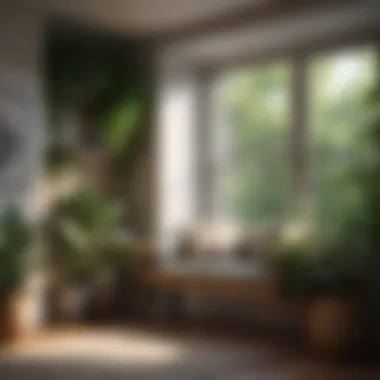
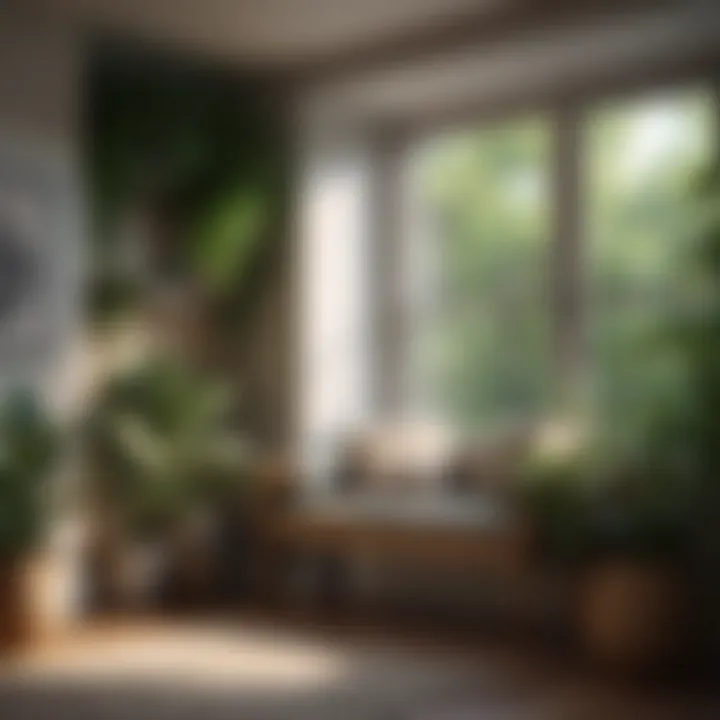
Consider high-traffic areas, like entryways, where a bold statement plant can make a memorable first impression. In contrast, quieter corners may benefit from smaller, low-maintenance plants that require less attention. Additionally, be mindful of light conditions in determining plant placement. Grouping plants that thrive in similar environments together can simplify care while creating a lush visual style.
Care Techniques for Indoor Plants
Incorporating greenery into home environments is not merely about selecting plants and placing them aesthetically. Understanding care techniques is crucial to ensure these plants thrive. Healthy plants contribute to the quality of air and enhance the aesthetics of living spaces. Moreover, proper care techniques prevent common problems such as overwatering, pest infestations, and nutrient deficiencies.
Watering Needs Based on Plant Type
Watering is an essential aspect of plant care, though needs vary significantly among different species. Some plants, such as succulents and cacti, thrive in dry conditions. They require infrequent watering, typically every few weeks. In contrast, tropical plants like ferns and spider plants generally need consistent moisture. They thrive when watered more regularly due to their natural habitats which are often humid.
To avoid overwatering, it is important to recognize the signs that a plant needs water. Yellowing leaves or wilting may indicate that it needs more.
Remember to always check the top inch of the soil before watering again. This can help in preventing waterlogged roots.
Developing a watering schedule based on plant type can greatly improve their health and lifespan. For example, consider using a moisture meter that provides an accurate reading of the soil's moisture level.
Optimal Lighting Conditions for Growth
Light is fuel for plants; without it, they cannot perform photosynthesis, which is essential for growth. Different plants have different light requirements. Some thrive in bright, direct sunlight, while others prefer indirect light.
- Direct sunlight: Plants like sunflowers or lavender enjoy high light and can often tolerate a few hours of direct sun.
- Indirect sunlight: Philodendrons and peace lilies do well in filtered light, making them suitable for brighter indoor spaces without direct exposure.
- Low-light plants: Snake plants and pothos are ideal for environments with insufficient light.
Adjusting the placement of your plants according to their light needs can lead to more vigorous growth. It's also wise to rotate plants occasionally to ensure all sides receive adequate light.
Fertilization Procedures for Healthy Plants
Fertilization plays a vital role in plant health, providing essential nutrients that might be lacking in potting soil. Generally, plants require different forms of nutrient replenishment during the growing season, typically from spring to late summer.
- Types of fertilizers: Organic options such as compost or worm castings work well for many users. Synthetic fertilizers provide quick nutrient access but may harm the soil over time.
- Application frequency: Most houseplants benefit from fertilization every 4 to 6 weeks during growing seasons.
- Signs of nutrient deficiency: Yellowing leaves and stunted growth are indicators that a plant may need extra nutrients.
When fertilizing, it is crucial not to over-fertilize. Too many nutrients can burn roots and could lead to unhealthy plants. Always follow the manufacturer's instructions when using store-bought fertilizers.
Through appropriate care techniques, homeowners can ensure their indoor plants not only survive but flourish. This can create a more vibrant and healthy environment in any home, enhancing both aesthetics and air quality.
Sustainable Practices in Indoor Gardening
Incorporating sustainability into indoor gardening is crucial for numerous reasons. As global environmental concerns grow, integrating eco-friendly methods into home gardening practices can both reduce one's ecological footprint and create healthier indoor environments. Sustainable practices foster biodiversity, promote soil health, and can often enhance the vitality of plants, ultimately benefiting both the gardener and the ecosystem.
Using Organic Soil and Fertilizers
Selecting organic soil and fertilizers is an essential component of sustainable indoor gardening. Organic soils generally contain natural materials without synthetic additives. These soils support beneficial microorganisms that improve soil fertility and structure, thus allowing for healthier plants.
Using organic fertilizers, such as compost or worm castings, not only nourishes plants but also reduces the risk of chemical runoff, which can be harmful to the environment. Homeowners should look for certifications showing organic compliance when purchasing these products. Moreover, understanding the nutrient requirements of different plants can help in choosing the right organic fertilizers, maximizing plant health and growth without the adverse effects of traditional fertilizers.
Recycling Household Items for Plant Care
Recycling items from around the house can significantly contribute to sustainable indoor gardening. By reusing materials, homeowners can reduce waste, save money, and provide practical benefits to their plants. For example:
- Plastic Containers: Re-purpose yogurt containers or similar items as plant pots. Ensure they have drainage holes to prevent root rot.
- Food Scraps: Kitchen scraps like coffee grounds, eggshells, and fruit peels can serve as organic fertilizers–providing essential nutrients to the plants.
- Glass Jars: Old jars can be transformed into terrariums or simple vases for cuttings, adding aesthetics and functionality.
By changing one's mindset towards waste, gardening enthusiasts can cultivate their spaces more sustainably.
Rainwater Harvesting Techniques
Rainwater harvesting is an excellent technique for sustainable indoor gardening. By collecting rainwater, homeowners can decrease the demand for municipal water and save on costs. Setting up a simple rain barrel can provide sufficient water for houseplants. It can be as easy as positioning a barrel under a downspout.
Methods to efficiently collect and use rainwater include:
- Positioning Barrels: This helps gather rain directly from the roof, minimizing waste.
- Using a Filtration System: A simple screen filter can prevent debris from entering the water.
- Watering Schedule: It is advisable to water plants early in the morning or late in the afternoon to reduce evaporation loss.


"Utilizing rainwater not only conserves a vital resource but also provides plants with natural, chemical-free water."
By incorporating these sustainable practices, indoor gardeners can enhance their home environments while contributing positively to the planet.
Case Studies of Successful Indoor Plant Integrations
The integration of greenery into home environments is not merely about adding a few plants; it is about creating a harmonious living space that fosters well-being and enhances aesthetic appeal. By examining case studies of successful indoor plant integrations, we can gain valuable insights into how to realize these principles in various settings. These cases highlight practical implementations, demonstrating the tangible benefits of plants in urban living, workspaces, and residential designs. Moreover, they offer inspiration and ideas for homeowners and design enthusiasts alike, showing the possibilities that exist when combining design with nature.
Urban Apartments with Green Elements
Urban apartments often present a unique challenge for integrating nature due to limited space and light. However, many residents have successfully incorporated greenery into their compact living environments. One notable example is the use of balcony gardens. Small but functional, balconies can become lush retreats with the right plant selection.
In urban apartments, consider these approaches:
- Container Gardening: Utilizing pots of varying sizes can help maximize space. Hanging planters and wall-mounted arrangements further enhance greenery without occupying valuable floor space.
- Choosing Space-Efficient Plants: Selecting varieties like succulents, snake plants, and pothos can contribute to a bio-diverse habitat that thrives in smaller areas.
These methods not only beautify urban homes but also improve air quality, providing a respite from the concrete surroundings. The visible greenery fosters a connection to nature, appealing to residents' psyches.
Innovative Use of Plants in Office Spaces
Integrating plants in office environments has gained attention for its numerous benefits, including increased productivity and reduced stress. Innovative designs showcase how businesses can strategically place greenery to enhance the work atmosphere.
For instance, some companies incorporate biophilic elements into their office layouts. This might include:
- Vertical Gardens: Expansive plant walls bring nature indoors, creating stunning focal points while also improving air quality.
- Shared Green Spaces: Designing communal areas with seating surrounded by plants encourages collaboration and relaxation, promoting camaraderie among employees.
Research suggests that the presence of plants can lead to higher employee satisfaction. As such, businesses that prioritize green integration may also see reduced turnover rates and absenteeism.
Residential Examples of Biophilic Design
Biophilic design refers to the practice of connecting building occupants more closely to nature. Several residential projects highlight this approach effectively, showcasing how homes can embrace elements of the natural world.
In these examples, homeowners have integrated:
- Natural Materials: Using wood, stone, and other organic materials complements the plant selections, enhancing the overall natural aesthetic.
- Large Windows: Maximizing natural light draws the external landscape into the home, providing an immediate connection to nature.
Such thoughtful designs encourage mindfulness and relaxation, improving overall mental health and enhancing the indoor experience. Homeowners can adopt these principles to transform their spaces into calming retreats focused on well-being.
"The presence of greenery in homes and offices can significantly impact our well-being, productivity, and creativity."
By exploring these case studies, it becomes clear that careful plant integration can transform both residential and commercial spaces. Each example provides practical pathways for homeowners seeking inspiration, as well as data-driven insights into the benefits of embracing greenery in their living environments.
Expert Opinions on Trends in Indoor Gardening
The integration of greenery into indoor environments has become a significant focus in contemporary design discussions. Understanding expert opinions on trends in indoor gardening is essential for homeowners and design enthusiasts. Experts identify key elements that influence plant choices and overall aesthetics. They also consider the broader benefits of such integrations, which extend beyond purely visual appeal.
Why This Matters
Experts emphasize the importance of plants in enhancing air quality and supporting mental well-being. Their insights help shape trends that prioritize sustainability, emotional health, and the aesthetics of living spaces. Many also advocate for the concept of biophilic design, where natural elements are incorporated into architecture to promote a connection with the natural world.
Future of Indoor Plant Design
The future of indoor plant design is evolving as more people recognize the significance of greenery in their homes. Experts predict increased utilization of smart technology in choosing and maintaining plants. For instance, homes will likely feature integrated systems that monitor plant health and environmental conditions, such as moisture levels and light exposure. This technology could change how individuals approach plant care, making it more accessible and less time-consuming.
Moreover, trends suggest a shift towards more personalized plant selections. Homeowners will seek out unique specimens that reflect their individual tastes and lifestyles, rather than sticking with conventional choices. This movement also encourages sustainable sourcing, with a growing preference for local nurseries and organic plants.
Influence of Technology on Plant Care
Technology plays a crucial role in contemporary gardening, especially indoors. Automated watering systems and smart sensors are now commonplace, making care easier and more effective. These technologies help monitor the health of plants, alerting users to relevant changes that could signal issues like over-watering or insufficient light.
Some popular tools include smart pots with built-in moisture sensors and apps that provide care instructions tailored to specific plant types. Such innovations not only simplify the gardening process but also make it possible for even novice gardeners to thrive. Additionally, advancements in LED grow lights have broadened the possibilities for plant selection, allowing a wider range of species to flourish indoors.
Community Gardening Initiatives in Urban Areas
Urban areas are experiencing a notable rise in community gardening initiatives. Experts highlight how these programs foster a sense of community while promoting sustainability. These gardens often serve as shared spaces where residents can collaborate, learn about gardening, and appreciate the benefits of greenery in their surroundings.
Community gardens also provide opportunities for education. Local workshops often encourage participants to engage with environmental issues while learning valuable gardening skills. These initiatives can transform vacant lots into lush, productive spaces that enhance the urban landscape. Additionally, they can improve air quality, increase biodiversity, and contribute to the mental well-being of surrounding residents.















